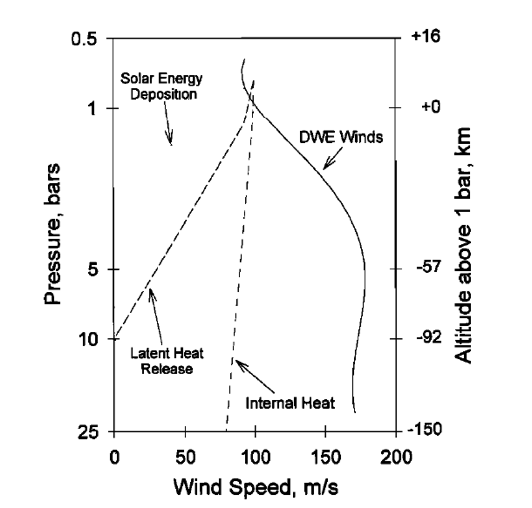
During its descent into the upper atmosphere of Jupiter, the Galileo probe transmitted data to the orbiter for 57.5 min. Accurate measurements of the probe radio frequency, driven by an ultrastable oscillator, allowed an accurate time history of the probe motions to be reconstructed. Removal from the probe radio frequency profile of known Doppler contributions, including the orbiter trajectory, the probe descent velocity, and the rotation of Jupiter, left a measurable frequency residual due to Jupiter's zonal winds, and microdynamical motion of the probe from spin, swing under the parachute, atmospheric turbulence, and aerodynamic buffeting. From the assumption of the dominance of the zonal horizontal winds, the frequency residuals were inverted and resulted in the first in situ measurements of the vertical profile of Jupiter's deep zonal winds.
Access to the Galileo Probe Data Volume
Citing the data
References Helpful in Scoping the Mission
The Doppler Wind Experiment Data
Other Documentation
Access to the Galileo Probe Data Volume
PDS recommendations for citing data sets can be found here.
Atkinson, David, (1996), Galileo Probe Doppler Wind Experiment Data Archive V1.0, PDS Atmospheres (ATM) Node, https://doi.org/10.17189/3t45-mn78
Publications - A listing of team members to facilitate literature searches.
Atkinson, David, (1996), Galileo Probe Doppler Wind Experiment Data Archive V1.0, PDS Atmospheres (ATM) Node, https://doi.org/10.17189/3t45-mn78
 PDS: The Planetary Atmospheres Node
PDS: The Planetary Atmospheres Node


